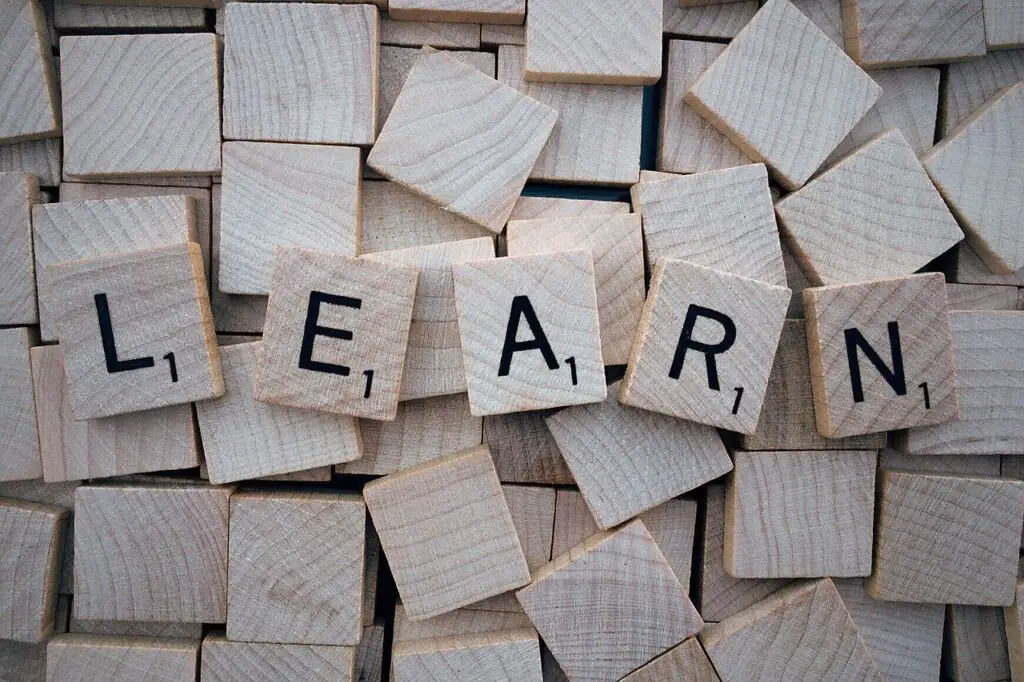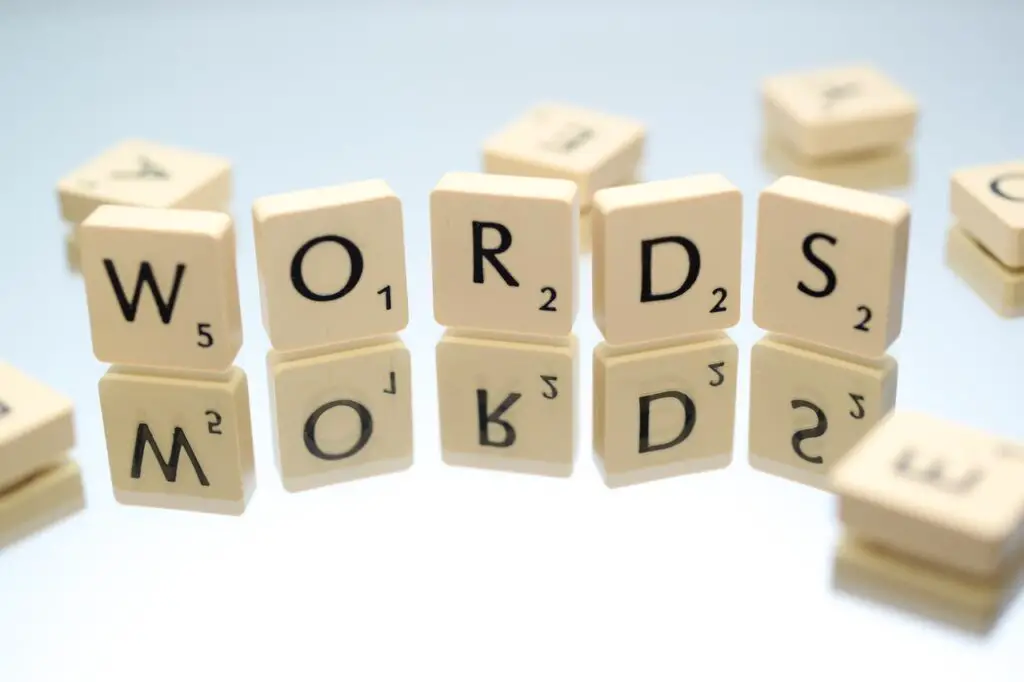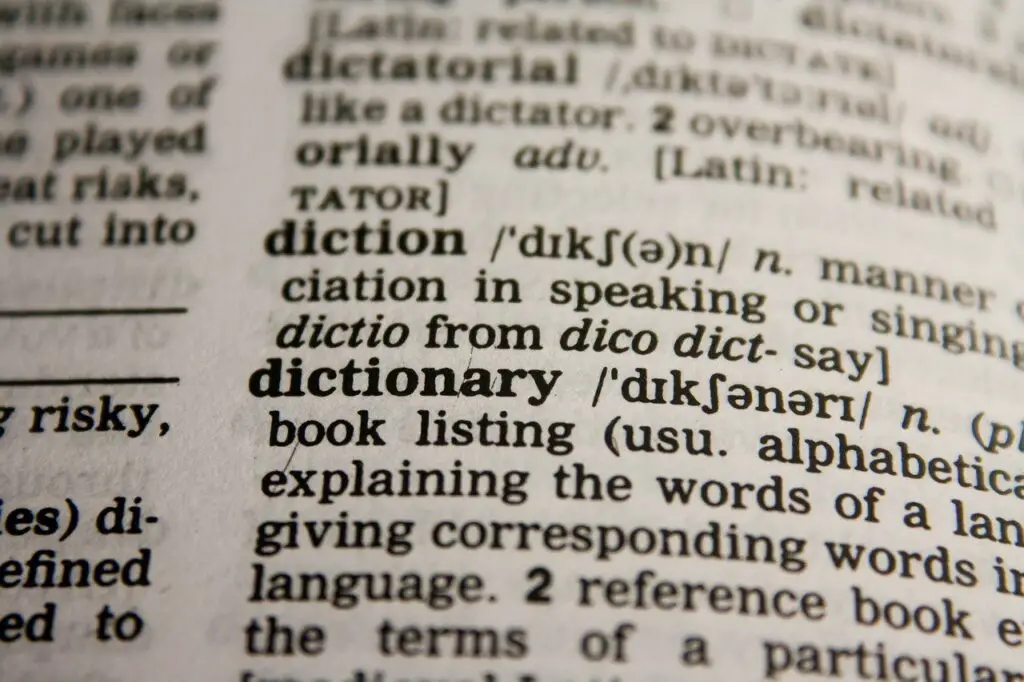Vocabulary is fundamental to learning any language. Teachers around the world have known this for centuries and few language classes are free from the concept of word lists, flashcards and vocab drills.
But is it all that important? Should we be teaching our EFL/ESL students more vocabulary, or focusing on other skills? Can we ditch vocab practice, or should we be doing more?

Here’s the TLDR:
Vocabulary underpins all aspects of English. In many cases, a lack of vocabulary is the limiting factor in learning progression. To improve students’ communication, teachers should aim to expand active and passive knowledge of frequent and useful words as efffectively as possible to ensure faster development.
That’s quite a strong statement. That’s why I’ve written this article to justify the position I share with many other teachers who see vocabulary teaching as undervalued and inefficient.
There are three parts to this post.
- The role of vocabulary in language and communication.
- The different types of vocabulary and which words are most important to learn.
- How students typically learn vocabulary and how to expand their knowledge.
So, without further delay, let’s get to it!
1. The role of vocabulary in language and communication
It doesn’t take a genius to realise that language is made up of words. Thousands of them. Each word carries a meaning (or multiple meanings). The order and formation of words in a sentence creates a higher level of meaning.
The house analogy
I like to think of a language like the construction of a house.
Phonics and the alphabet are the foundations. Sounds and their written representations are the smallest, most fundamental units. But on their own, they don’t have meaning.
Bricks represent vocabulary. They’re the building blocks of language, each with their own purpose and meaning.

Grammar is the mortar that holds the bricks together. It allows us to place the right bricks in the right place and hold them there so we can create walls to hold the house up.
Windows, doors, stairs, floors, furniture, plumbing, etc. are the four key skills: reading, writing, listening and speaking.
To make a bigger house, we need more bricks. To progress in learning a language, we need more words. Sure, you can have a small house with excellent mortaring and fantastic amenities, but there’ll come a point when the house just isn’t big enough and bricks are required to expand.
Vocab vs. grammar – which is more important?
A house made of bricks without mortar is still a house. Sure, it’s not a particularly stable house, but you can, in theory, build walls and create the semblance of a building.
But a house of mortar without bricks?
Vocabulary and grammar are both very important, there’s no question about it. But I’d argue vocabulary is more important than grammar for the simple reason you can have vocabulary without grammar but you can’t have grammar without vocabulary.
This is especially true with students of a lower level who lack very basic vocab, because they can’t even begin to understand or produce the language without words.
But it’s also relevant to more advanced students. You’ll struggle to talk about horse riding without words like saddle, trot and dismount. But you could definitely hold a conversation, albeit stilted, with those words but being unable to control word order and tense.
Want to improve your grammar teaching in private classes? Head to my article to find out how: Teaching EFL/ESL Grammar: A guide for private tutors
The role of vocabulary in communication
Words are the smallest unit of meaning in language. Each word represents a unique concept and sometimes just a single word carries enough information to communicate the desired intention.
Our brains are remarkable organs. They can take a small piece of information, assess it in context and extract meaning from it.
For example, let’s say a Japanese tourist is driving along a narrow lane in the a rural area like Cornwall in England. They come across a farmer in her tractor. At first the farmer says something in a thick accent, rambling and pointing down the road. The poor tourist has no idea what she’s saying.
The farmer realises the tourist understands nothing and just says the word “cows”.
If our Japanese tourist knows a little English vocabulary, they can understand the word and instantly capture what the farmer is trying to say. There are cows on the road ahead. Be careful.
Furthermore, the English language is packed full of words which contain vibrant and distinct meanings.
Take the different words for walking as an example. Stroll, creep, pace, march, hobble, shamble, stride, mince, stagger, strut, plod, parade… the list goes on. Communication is far clearer and richer with a greater breadth and depth of vocabulary. The more bricks you have, the bigger the house.
2. The different types of vocabulary and which words are most important to learn
Vocabulary comes in different forms. Nouns, verbs, adjectives, adverbs, phrasal verbs, collocations… they’re all equally important. But not all words are understood in the same way, and some are more useful than others. Let’s take a look.
Active vs. passive vocabulary
Active vocabulary refers to the words somebody is able to produce in speech and writing.
Passive vocabulary is the collection of words someone is able to recognise.
Passive vocabulary includes all the active vocabulary, so is always larger. The difference in size depends on how frequently a language learner practices speaking and writing in comparison to reading and listening.
This concept applies to native English speakers, too. I would know what the word vertiginous means if I read it, or somebody said it to me, but I’m confident I’ve never used it myself.
Both active and passive vocabulary are important. We want our students to increase both types of vocabulary, and we don’t need to put particular emphasis on either.
How many words do EFL/ESL students need to know?
The number of words an EFL/ESL student has in their passive vocabulary often correlates to their proficiency level.
Of course, someone could learn 10,000 English words and never study grammar or speak a word of English and you couldn’t say they have a very high level, so the following figures assume a balanced understanding of the language.
Also, bear in mind this isn’t an exact science. Different experts claim different figures, so take them all with a healthy pinch of salt and room for variability. Consider, too, that lots of words have different meanings and can be used in phrasal verbs or collocations which change their meaning entirely.
| Level | Number of words known |
|---|---|
| Beginner (A1/A2) | 0-1,000 |
| Lower Intermediate (B1) | 1,000-4,000 |
| Upper Intermediate (B2) | 4,000-8,000 |
| Advanced (C1/C2) | 8,000-16,000 |
| Native Speaker | 16,000+ |
NOTE: these figures don’t consider different forms of a word separately. play, played and playing are all treated as the same word.
As you can see, there are lots of words to learn. So, do you need to start teaching your students 8,000 new words? Not really. They’ll pick up many words along the way, adding to their passive vocab, but these numbers do indicate that learning lots of vocabulary is a good way to advance in English.
Correlation is not causation, but it’s certain that vocabulary size is a massive factor contributing to proficiency.
Is all vocabulary equally important?
The answer to this question is a clear NO.
All words are not created equal. There are some essential words which all students should learn, while there are many more which are completely useless.
If a student decides to learn 4,000 names of plants and animals and nothing else, can we say they have a B2 level? Definitely not. Those words are fairly useless on their own.
You can find plenty of lists online with the most frequently used words in English. I like this website: https://www.englishprofile.org/wordlists/evp as you can filter words by level and category, with the lower level words being the most frequent and useful.

However, you shouldn’t use these as an absolute guide for teaching vocabulary. You already know which words are most common, because you use them most. The words take, body and help are obviously important words, you don’t need a list to tell you that.
Plus, different words are useful for different students. Once you’ve established a core vocabulary, what you teach next really depends on the needs and preferences of your students.
If your student works in a garden centre or zoo, perhaps they need to know some of those 4,000 plant and animal names from earlier. Business people want to learn words and phrases for organisation and negotiation. School children should learn words relevant to school, hobbies and family.
I feel verbs are often neglected. Basic vocab lists too often focus solely on nouns in a category (sports, food, clothes, etc.) and miss out important related verbs like strike the ball, nibble the food and fasten the buttons.
3. How students learn vocabulary and how to expand their knowledge
Traditional methods for learning vocabulary fall short, in my opinion. We’ve all experienced vocab tests and repetitive drilling exercises in which students are expected to “just remember”.
In this section I hope to show you how to move away from standard methods and adopt a highly effective vocab learning system.
Do students learn enough vocabulary at school, in language academies or in private classes?
Most students I’ve met are limited by the amount of vocab they know. They struggle to communicate because they don’t know a word, or don’t have enough depth in their vocabulary to transmit a specific or nuanced meaning.
Most schools and language academies focus too much on grammar. I’m not against teaching grammar; it’s an extremely important part of language, but as we discussed earlier, you can’t build a house only using mortar.
The problem is, students learn grammar rules without having enough words to apply them in a variety of situations. This is true regardless of how engaging and effective the grammar teaching is.

Is vocabulary taught effectively?
On the whole, vocabulary teaching lacks effectiveness and efficiency. Nowadays things are better than they used to be – most good teachers have moved away from dry vocab tests and repetitive translation drills, and instead use flashcards, games and other fun activities.
But a lot of the time the new words don’t stick. There are three reasons I believe this happens:
- The vocabulary learned lacks value for the students. It’s arbitrary, coming from a big word list or textbook, and isn’t immediately useful for them.
- There isn’t enough supporting information and related hooks to create strong neural connections for memorisation.
- Retention isn’t maintained over time. While students may be able to remember words in the short term, after a few weeks, neural connections decay (made even worse if the brain doesn’t consider it valuable information).
How to effectively expand students’ vocabulary and boost their English progression
As we’ve already discussed, there’s a correlation between how many words an EFL/ESL student knows and their ability to understand and produce English. We’ve also just seen that common methods for learning vocabulary aren’t as effective as they could be.
If you’re wondering how you can create long-lasting, efficient learning, I have the solution for you. I’ve developed a comprehensive method for vocab learning.
It consists of a series of articles running you through the phases and steps you need to take, as well as introducing you to Anki, the best app for learning vocabulary.

You can read it all for free by heading to the big parent article here: Best Method to Improve EFL/ESL Students’ Vocabulary: 9 Steps and following the links at each step.
It covers the acquisition phase in which students discover new words which are valuable to them, the memorisation phase in where you use images, sounds, gestures and memories to create powerful connections in the mind, and finally the retention phase where memories are maintained in the long term.
Conlusion
I hope I’ve convinced you that vocabulary is perhaps the most important aspect of learning English (and indeed any language). Words are important. The more you have, the more you can communicate.
But quality matters as well as quantity. Relevant, frequently used and practical vocabulary beats learning lots of random words just for the sake of it.
And there are ways to improve your vocabulary teaching. Don’t settle for second best, and instead read my big guide to ensure your students advance rapidly in their language learning journey.
For all the information you could ever possibly want on teaching EFL/ESL vocab, take a look at all my articles on the topic.
BIG OVERALL GUIDE: Best Method to Improve EFL/ESL Students’ Vocabulary: 9 Steps
Why EFL/ESL Students Forget Vocab: Causes and Solutions
How to Elicit Vocabulary in EFL/ESL: 7 Effective Activities
What Vocab Should You Teach in EFL/ESL: Organic acquisition
How to Use Images for Deep Vocab Memorisation in EFL/ESL
How to Use Gestures to Embed Vocab in EFL/ESL + 2 Games
How to Test EFL/ESL Vocabulary: Best assessment methods
Sounds and Audio Hooks for Lasting Memorisation in EFL/ESL
How to Teach Vocab in EFL/ESL with Memorable Moments
Supercharge EFL/ESL Vocab With Spaced Repetition (Anki)
How to Make Vocab Last Forever: Reinforcing connections
9 High Energy EFL/ESL Games for Boosting Vocabulary






